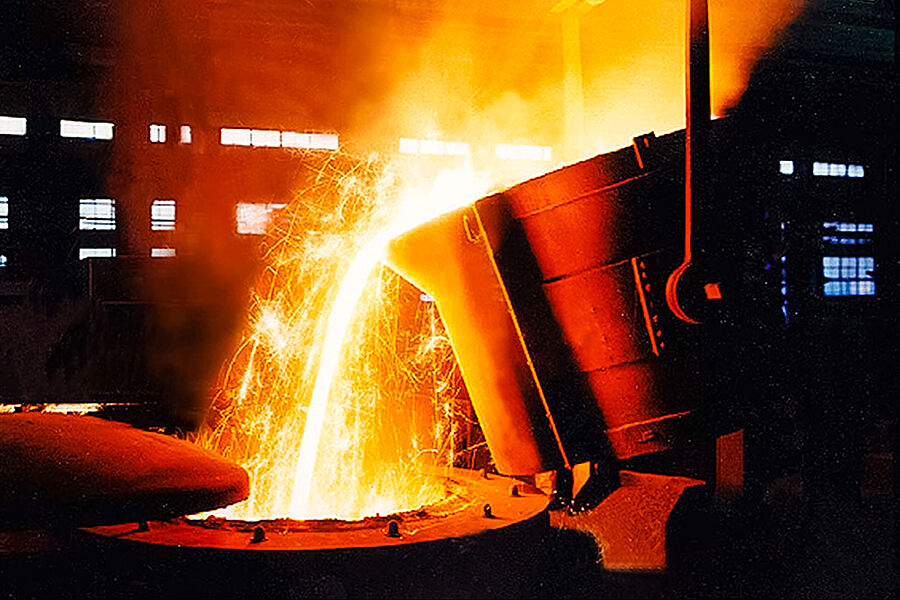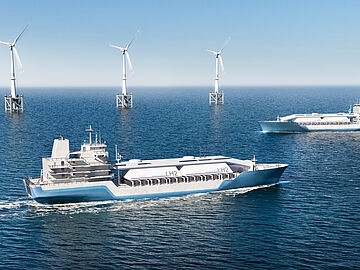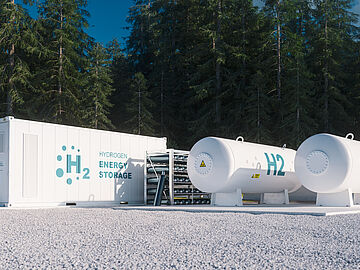Hydrogen in industry: future prospects and applications in chemicals, steel, and low-emission fuel production
Current hydrogen use in industry
Hydrogen is already widely used in industrial sectors such as chemicals, iron and steel, and refining. More than half of the current global hydrogen consumption occurs in industry, with approximately 60% used for ammonia production, 30% for methanol, and 10% for direct reduction iron (DRI) in the iron and steel sector. The remaining hydrogen is primarily consumed by refineries.
Low-emission hydrogen production for industry
Nearly all hydrogen used in industry today is produced from fully emitting fossil fuels at the same sites where it is consumed. To meet climate targets, industrial hydrogen production capacity must transition to low-emission alternatives in the medium to long term. This entails building most new capacities as low-emission systems and retrofitting some existing plants.
In addition to traditional applications in refining, chemical, and steel industries, hydrogen consumption is expected to grow in new industrial applications, particularly in 100% hydrogen-based DRI and high-temperature applications. Currently, hydrogen produced via electrolysis accounts for a low single-digit percentage of total production, with little progress in recent years. However, future prospects, especially in Europe, look significantly better, with numerous projects announced or under development. Many planned projects aim to produce hydrogen centrally at advantageous locations, such as Spain in Europe, and deliver it to various industrial users to distribute risks. This, however, requires the development of transport infrastructure.
Transport and storage of hydrogen
Hydrogen-based fuels and feedstocks, known as "derivatives," such as ammonia, methanol, and synthetic hydrocarbons (e.g., methane, kerosene, ethene, ethylene), are generally easier to store and transport than pure hydrogen. These derivatives can utilize existing infrastructure, such as natural gas pipelines, and be used in end-user technologies like aircraft or ships. However, producing such hydrogen-based fuels involves additional costs, energy, and raw materials for conversion.
Projects for the production of ammonia, synthetic methane, and methanol are currently in operation, planning, or implementation stages. The prominence of ammonia can be attributed to its direct use as an alternative, low-emission feedstock for existing processes. Ammonia requires no carbon, simplifies supply chains, and is therefore an attractive frontrunner among hydrogen-based fuels. Additionally, ammonia can serve as a long-distance transport medium for hydrogen. However, in cases where ammonia is burned as fuel, emissions of nitrogen oxides (NOx) and nitrous oxide (N₂O) must be minimized. Other hydrogen-based fuel projects, such as Fischer-Tropsch fuels (FT) and synthetic methanol, are also expected to expand in the coming years, driven by demand in the aviation and maritime sectors.
Hydrogen production costs
As mentioned, converting hydrogen into other fuels and feedstocks increases production costs. For ammonia from electrolytic hydrogen, capital expenditures currently account for more than half of production costs, primarily due to the cost of electrolyzers. Therefore, reducing electrolyzer costs will lower overall production costs, making electricity costs a more significant factor.
For FT liquids, such as synthetic kerosene from electrolytic hydrogen, production costs vary significantly depending on the CO₂ source. Key cost factors include electrolysis, conversion losses, synthesis, and CO₂ availability. CO₂ costs are particularly relevant when using bioenergy with carbon capture and storage (BECCS). CO₂ from direct air capture (DAC) avoids supply bottlenecks but currently involves significantly higher costs. The DAC technology is still in its early stages, and increased deployment and technological advancements are expected to lower costs.
System integration of hydrogen technologies into existing infrastructure and industrial systems
AIT offers comprehensive development services in the integration of hydrogen technologies into existing infrastructure and industrial systems. These services take a holistic approach to optimize and scale hydrogen applications. Key areas include:
- Techno-Economic System Assessments: Analyses of the economic and technical aspects of integrating hydrogen into industrial processes and energy infrastructures provide a basis for informed decision-making and ensure system efficiency and cost-effectiveness.
- Design and Technical Configuration Using Digital Models ("Digital Twins"): Virtual twins of facilities allow for real-time simulation, optimization of operational processes, and early identification and resolution of potential issues during the planning stage.
- Technology-Specific Support for Hydrogen Plant Procurement: AIT supports companies in procuring hydrogen systems by offering technology-specific consulting and guidance throughout the procurement process. Market-available technologies and systems are analyzed to identify the optimal solution for specific customer needs.
- Analysis of Grid Suitability and Flexibility of Hydrogen Systems: This includes examining the flexibility of systems, such as fast-reacting electrolyzers, for demand-response applications in distribution and transmission grids to balance grid fluctuations.
- ICT Interface Design and Interoperability Testing: Ensures seamless communication and functionality between various system components.
Development services for hydrogen integration in industry and infrastructure at AIT
- Techno-economic system assessments for hydrogen integration in industry and infrastructure
- Design and technical configuration of hydrogen-based systems using digital models ("Digital Twins")
- Technology-specific support in the procurement process for hydrogen systems
- Analysis of existing technologies and systems on the market
- Examination of grid suitability and flexibility of hydrogen-based systems (e.g., fast-reacting electrolyzers for demand response in distribution and transmission grids)
- ICT interface design and interoperability testing
Hydrogen solutions for industry: efficient decarbonization in complex high-temperature applications
In the field of industrial hydrogen applications, the AIT Austrian Institute of Technology offers comprehensive solutions to support the transformation of sectors where CO₂-neutral technologies are particularly challenging and complex to implement. A key focus is on high-temperature applications, such as gas burners and furnaces, where hydrogen can make a significant contribution to decarbonization. We evaluate technology options at the site level, analyze technical learning curves and price developments, and develop tailored investment strategies. Our services range from material and manufacturing process development at the component level to the conversion of industrial processes to hydrogen and its derivatives at the plant level. In addition, we provide solutions in Power-to-X and Carbon Capture Utilization (CCU) technologies, including: the use of green hydrogen in conversion pathways, electrocatalytic CO₂ reduction and high-temperature co-electrolysis (SOEC). By offering these advanced solutions, we support industries on their journey toward a CO₂-neutral future.





